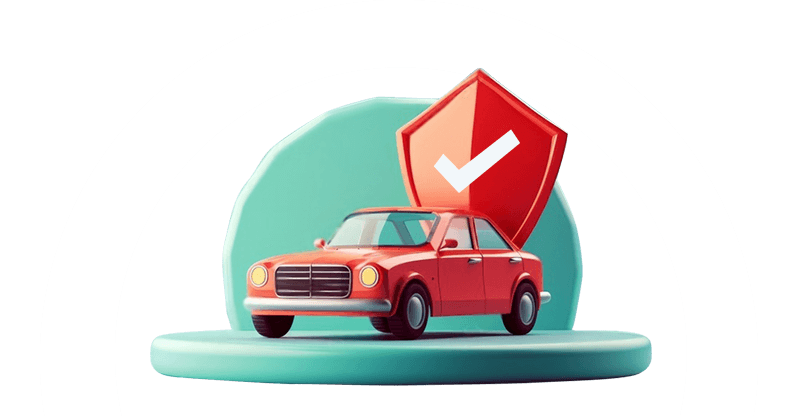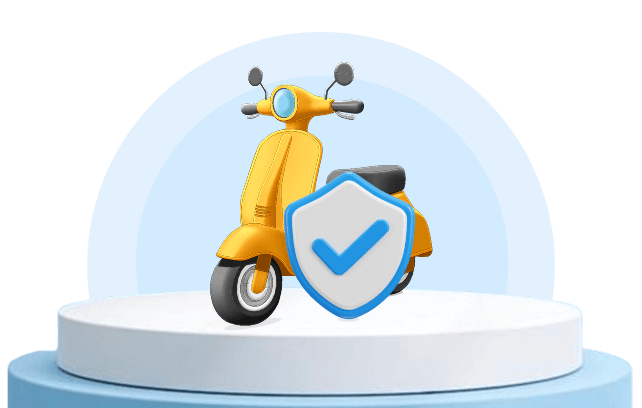
Car accidents are a pretty unfortunate and unpredictable event that could involve even the finest of drivers. Talking specifically about the Philippines, here, as per the US Road Safety Fund, around 35 road crash fatalities happen each day, which is estimated to be 12,690 fatalities per year. The report also states that children are more vulnerable to road traffic injuries due to their evolving physical and developmental capacities.
The entire experience is a bit overwhelming and can be avoided if you or other drivers are aware of the usual causes, which in turn will prepare you to take the necessary precautions. The most common type of car accidents in the Philippines -
- Rear-end collisions - When a vehicle crashes into the back of another vehicle.
- Intersection accidents - When two vehicles collide at an intersection.
- Sideswipe accidents - When two vehicles moving side-by-side collide with each other.
- Lane change accidents - When the vehicle collides with other vehicles while changing lanes.
- Pedestrian accidents - When a vehicle collides with a pedestrian.
- Single-car accidents - When a vehicle collides with an object or runs off the road.
Tips to avoid the above-mentioned road accidents/collisions -
- Stay focused while driving.
- Maintain a safe distance from the vehicle ahead of you.
- Be aware of your surroundings and look out for pedestrians and animals.
- Obey traffic laws, signals, and signage.
- Check the blind spots.
- Try to stay in your lane and use turn signals when changing lanes.
- Obey the speed limit.
- Never drive under the influence.
Even after following these tips, if you get caught in a road accident, it is essential to follow a few essential steps to - ensure your and everyone else's safety, protect your rights, and efficiently claim car insurance.
In this article, we’ll be discussing the aftermath of a car accident and how every Filipino car driver should deal with it. We’ll be covering -
- Immediate steps after a car accident
- Documenting the accident
- Exchanging information with the other party
- Informing the insurance provider
- Filing a police report
- Claiming car insurance
All this, along with other essential details, will help come out of the mess quickly without much setback. So, read carefully and save this article for the time you need it.
What to do immediately after a car accident?
Step I. Stay calm
First and foremost, take a deep breath. What has happened can’t be reversed. And it is only through a clear head that you’ll be able to act wisely.
Step II. Check for injuries
Ensure that you and your passengers are okay. If not, call the emergency helpline.
 Photo from Freepik
Photo from FreepikStep III. Move to a safe space
If you and your vehicle are obstructing the traffic and are in a position to move, try shifting to a safe space. In case of a major accident, where the vehicle can not be moved, try turning on the hazard lights to alert approaching vehicles.
Step IV. Contact authorities
Once you are in the right frame of mind, contact the police or traffic enforcers. It is also advisable to call a friend or family member who can approach you quickly and help. It doesn’t matter if the accident is major or not, injuries are sustained or not, or if there’s a dispute involved or not - informing authorities will only help you.
Time to document the incident
The thing with car accidents is that proper documentation is a must, as it has the power to either make or break the car insurance claim. So, here’s how you should go about documenting the whole incident -
- Pictures and videos - Make sure to capture the damage your vehicle and the other vehicle sustained. Take images from different angles and do not forget to include the license plates, traffic signs, and the overall accident scene. The more pictures, the better.
 Photo from Freepik
Photo from Freepik- Gather witnesses - If possible, try and look for people who first-hand witnessed the accident/collision. Try and get their name and contact details, as you might need them later.
- Take notes - Often we forget key details or get conferred, therefore, it is recommended to write down key accident details like the date, time, location, and a brief description.
Exchange key information with the other party
When you are involved in a car accident with another car or a pedestrian, always make sure to exchange details. Note that it doesn’t matter if they are super cooperative and assure you to show up as and when needed; it is suggested to exchange details. Here’s a list of information you should exchange -
- Name
- Driver’s license
- Contact details
- Vehicle details - model & plate number
- Vehicle’s Official Receipt and Certificate of Registration
- Insurance details - provider & policy number
Tip: When communicating with the other party, be polite and never admit to your fault.
Contact the insurance provider
In the Philippines, if you get involved in a car accident, it is advised to contact your insurance provider asap. These days, most insurance companies have a 24-hour hotline. At the call, you might be asked to do a few things -
- Share the accident location
- Give details of the involved vehicle/person/object
- Collect photos of the incident/vehicle
- Police report, if available (try getting one to strengthen your claim)
Often, after the call, a claim adjuster might come and offer a visit. Also, if your policy offers roadside assistance, ask for it.
 Photo from Freepik
Photo from FreepikFile a police report after a car accident
In the Philippines, it is advisable to file a police report immediately after an accident, be it minor or major. Why? Immediate reporting helps ensure a timely investigation and initiation of an insurance claim. Further, it also authenticates the accuracy of the details collected by the car owner.
Do not worry if you haven’t reported the incident in the first few hours or days following the car accident. The law does not specify a strict deadline for filing a report. However, it is recommended to do it as soon as possible, as a delay can lead to difficulty in evidence preservation and the claim process, also there could be legal repercussions.
Things to consider when filing a police report -
- Go to the nearest police station.
- Provide all essential information about the accident, including contact information of witnesses, photos of the scene, and personal details.
- Follow up with the police and ensure all legal and procedural steps are taken.
Guide to filing an insurance claim
Time to learn about claiming insurance after a car accident in the Philippines -
Step I. Call or visit your insurance provider asap. Some providers require you to report the accident within a specific timeframe.
Step II. Gather and submit the required documents, including photos, police report, medical bills, repair estimates, and others.
Step III. Ask for the insurance claim form and fill it out accurately.
Step IV. Cooperate with the insurance claim adjuster, as they might inspect the vehicle or investigate the scene for verification purposes.
Step V. A more thorough investigation will be conducted if the fault is disputed. In case you disagree with the initial findings or settlement offer, negotiation is the way out, or you can seek legal advice as well.
Step VI. The insurer will calculate the liability and coverage, after which your claim will either be approved or denied. Approval will either lead to reimbursement or direct payment of repair bills, medical bills, etc. If the claim is denied, you can either file an appeal with the insurer or take the matter to the Insurance Commission.
Tips for a smooth claim process
- Keep a comprehensive record of all the communication with the insurer and bills - hospital, medicine, repair, etc.
- Proper documentation will speed up the claim process.
- Follow up regularly with the adjuster/claim department.
- In case of a major accident, serious injuries, or disputed liabilities, it is best to consult an attorney.
- Try to be honest and transparent. Always provide accurate information, as misrepresentation of information can lead to denial of claim and/or legal consequences.
- Make sure to review your car insurance policy regularly, get it updated as per requirement (change in vehicle use, or if you need an add-on).
Bottom line
Getting involved in a car accident is a stressful experience; however, if you know what needs to be done, you are in a much better space. This guide mentions all the steps, legal documents, and other essential details that need to be followed/collected post-accident. Here you’ll also learn about how to file an insurance claim and steps to ensure a smooth recovery process.
Remember, to stay calm during an accident, keep this guide handy, and most importantly, keep your insurance policy updated.
FAQs
Q1. How long does it take to process a car insurance claim in the Philippines?
Ans. Depending on factors like your car insurance provider, completeness of documents, extent of damage, and availability of repair parts, the claim process can take a few weeks to a month.
Q2. What if the insured is at fault in a car accident?
Ans. If you are at fault, it can lead to the denial of coverage (in case of policy violation), hike in annual premium, and legal consequences.
Q3. What if the other driver is uninsured?
Ans. You can either file a claim under your comprehensive policy or sue the at-fault party personally.
Q4. What if the settlement amount is too low or the claim is denied?
Ans. You can either file an appeal with your insurance provider or take the case to the Insurance Commission.
Q5. Do I need a police report to file a car insurance claim?
Ans. A police report is not mandatory for filing a claim, but it is highly recommended for a smooth process. In case of major damage or accident, a police report is a must.
Q6. What if I do not report the incident to the insurance provider?
Ans. Non-compliance with reporting terms can lead to the denial of your insurance claim.
Q7. What documents are required to file a claim?
Ans. You will need a copy of the police report, photos, medical bills, repair estimates, and other requested documents.
Q8. What is the standard compensation amount for car accidents?
Ans. While CTPL insurance has statutory limits on bodily injuries and death claims, comprehensive coverage compensation depends on the policy's stated insured amount, coverage terms, and deductibles.
Also Read: Car insurance claims in the Philippines: Common scenarios and claim types explained











